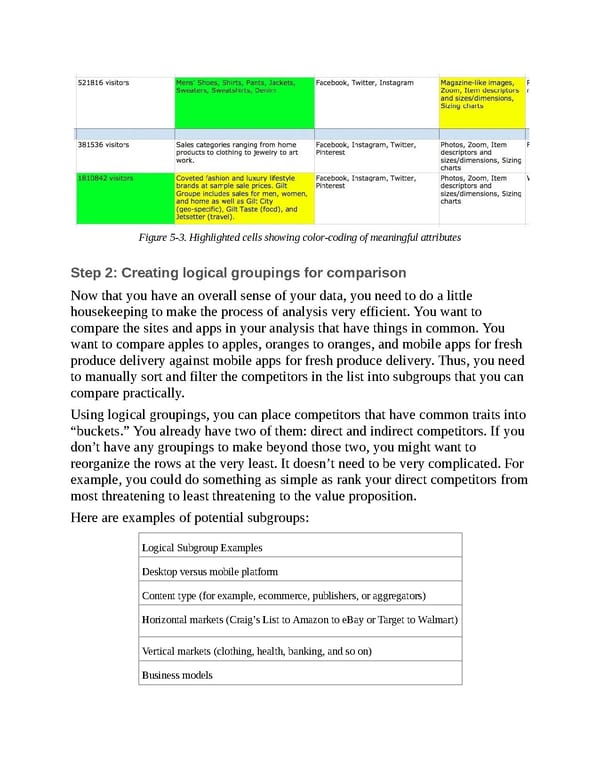Figure 5-3. Highlighted cells showing color-coding of meaningful attributes Step 2: Creating logical groupings for comparison Now that you have an overall sense of your data, you need to do a little housekeeping to make the process of analysis very efficient. You want to compare the sites and apps in your analysis that have things in common. You want to compare apples to apples, oranges to oranges, and mobile apps for fresh produce delivery against mobile apps for fresh produce delivery. Thus, you need to manually sort and filter the competitors in the list into subgroups that you can compare practically. Using logical groupings, you can place competitors that have common traits into “buckets.” You already have two of them: direct and indirect competitors. If you don’t have any groupings to make beyond those two, you might want to reorganize the rows at the very least. It doesn’t need to be very complicated. For example, you could do something as simple as rank your direct competitors from most threatening to least threatening to the value proposition. Here are examples of potential subgroups: Logical Subgroup Examples Desktop versus mobile platform Content type (for example, ecommerce, publishers, or aggregators) Horizontal markets (Craig’s List to Amazon to eBay or Target to Walmart) Vertical markets (clothing, health, banking, and so on) Business models
 UX Strategy: How to Devise Innovative Digital Products that People Want Page 114 Page 116
UX Strategy: How to Devise Innovative Digital Products that People Want Page 114 Page 116